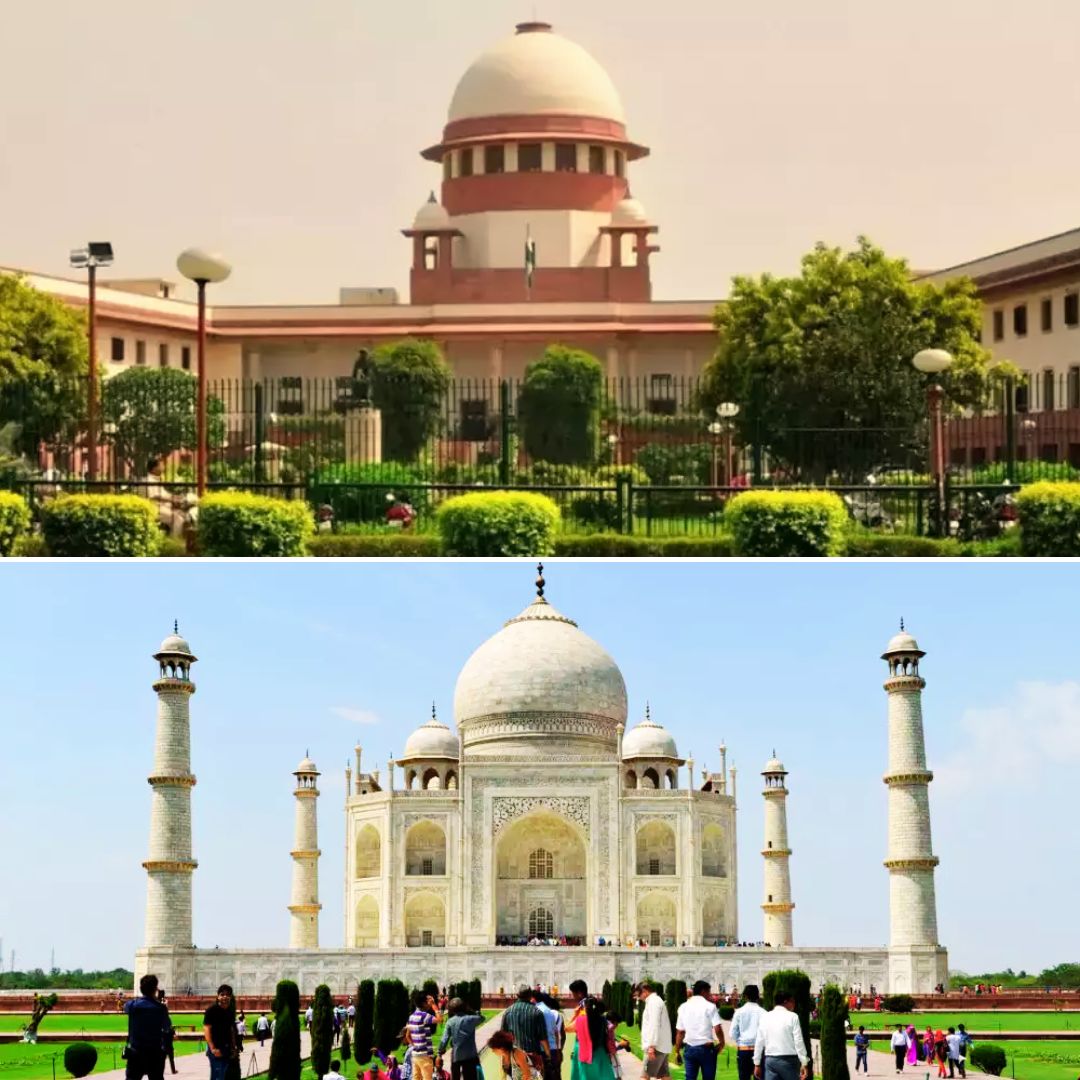On Thursday, May 1, 2025, the Supreme Court of India reiterated its 2015 directive, strictly prohibiting tree felling within a five-kilometre aerial radius of the Taj Mahal in Agra, Uttar Pradesh, without its explicit permission.
The ruling covers the Taj Trapezium Zone (TTZ), a 10,400 sq km area spanning districts in Uttar Pradesh (Agra, Firozabad, Mathura, Hathras, Etah) and Bharatpur in Rajasthan.
The Court dismissed a plea seeking relaxation for private landowners, underscoring the need for prior approval even for cutting fewer than 50 trees. Officials and environmentalists have welcomed the decision, while landowners express concerns over procedural delays. The Court also directed a tree census and a review of protections for other UNESCO sites in the region.
Stringent Safeguards for Taj Mahal’s Green Cover
A bench of Justices Abhay S Oka and Ujjal Bhuyan clarified that the original May 8, 2015 order remains in force: no tree within five kilometres of the Taj Mahal – regardless of number – can be felled without prior Supreme Court approval, based on recommendations from the Central Empowered Committee (CEC).
The Court also mandated that permission for areas outside the five-kilometre zone but within the TTZ must be granted by the Divisional Forest Officer (DFO), in strict compliance with the Uttar Pradesh Tree Preservation Act and compensatory afforestation norms.
The bench emphasised, “Only in cases of grave urgency, such as imminent risk to human life, can the tree felling be expedited. Even then, due diligence must be exercised.” The Court further directed the Forest Research Institute to conduct a comprehensive tree census within the TTZ, aiming to establish a baseline for monitoring and enforcement.
Environmentalists and heritage conservationists have lauded the decision. “This is a decisive step towards protecting not just the Taj Mahal but the entire ecosystem that supports it,” said Dr. Sunita Narain, Director General of the Centre for Science and Environment.
Meanwhile, representatives of local landowners have expressed concerns about delays in obtaining permissions for essential activities like agriculture and infrastructure development.
Background: A Balancing Act Between Conservation and Development
The TTZ was established in 1996 by the Supreme Court in the landmark MC Mehta v. Union of India case, aimed at shielding the Taj Mahal from pollution and environmental degradation. Over the years, the Court has issued several directives to curb industrial pollution, vehicular emissions, and illegal construction in the zone.
In 2019, the Court had relaxed the requirement for prior permission on non-forest and private lands, but concerns over misuse and illegal felling led to the recent withdrawal of that exemption. The Court’s latest ruling reinstates strict controls and penalties, including a ₹1 lakh fine and compensatory afforestation for violations.
Recent incidents, such as the illegal felling of 454 trees in Mathura’s Dalmia Bagh, prompted the Court to order replantation and impose hefty fines. The Court has also asked the CEC to assess whether similar protections are needed for other UNESCO World Heritage Sites in the area, including Agra Fort and Fatehpur Sikri.
The Logical Indian’s Perspective
The Logical Indian applauds the Supreme Court’s renewed commitment to environmental protection and heritage conservation in the TTZ. This ruling not only safeguards the Taj Mahal’s iconic beauty but also upholds the principles of environmental justice and public trust.
While we recognise the challenges faced by landowners and farmers, we believe that collective responsibility and dialogue can balance development with conservation.
As stewards of our shared heritage, how can we, as citizens, contribute to preserving India’s natural and cultural treasures for future generations? Let’s start a conversation about sustainable stewardship and the role each of us can play in ensuring that development and heritage protection go hand in hand.
What steps can local communities and authorities take together to ensure the TTZ remains a model of harmony between people and nature?












